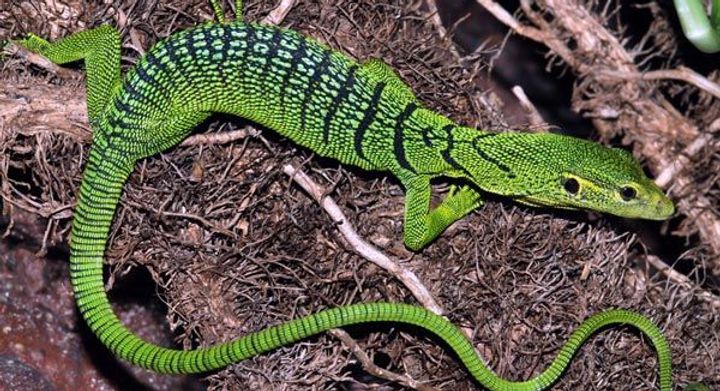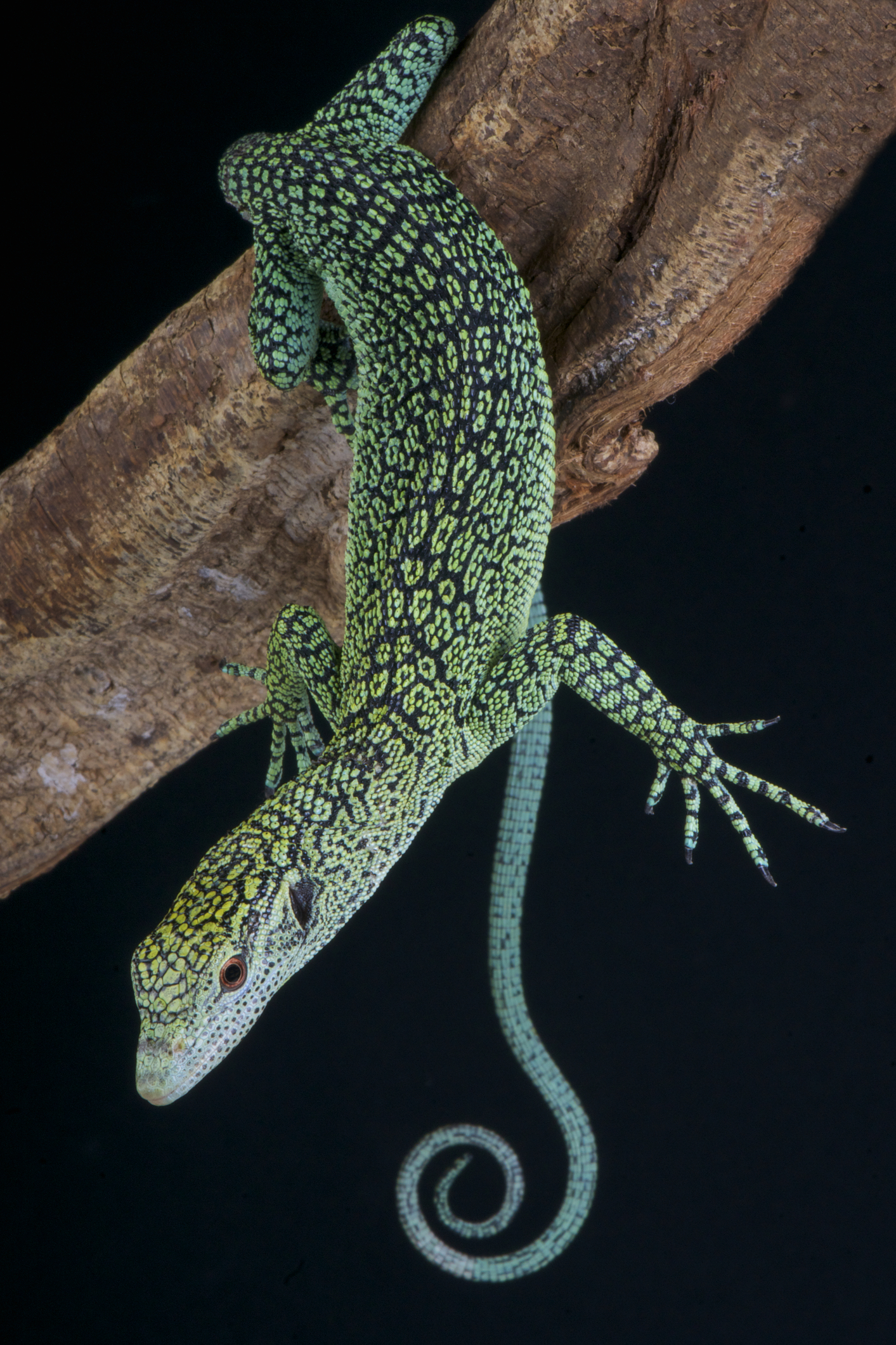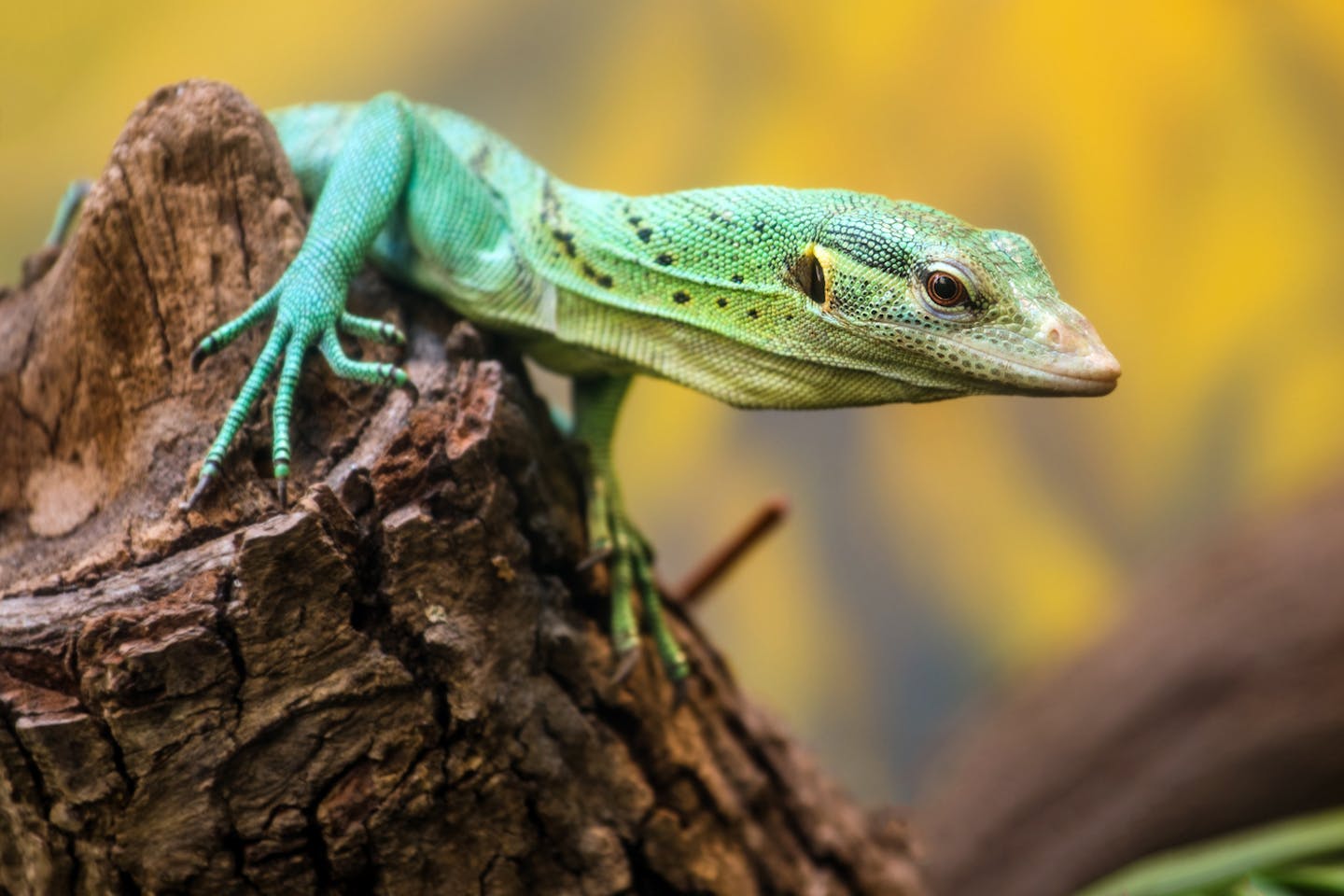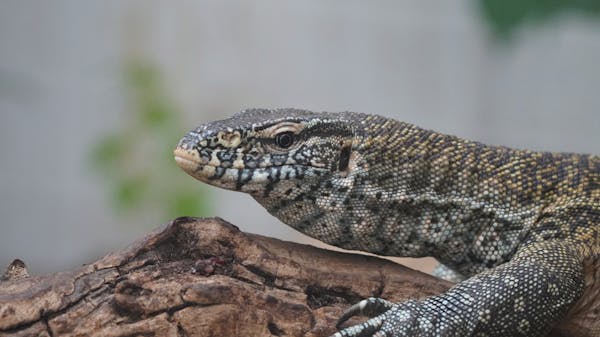The jewel of the trees: The Biak emerald monitor
- Nature Conservation
- Land Conservation
- Iconic Species
- Wildlife
- Reptiles
- Australasian Islands & Eastern Indonesia
- Australasia Realm
One Earth’s “Species of the Week” series highlights an iconic species that represents the unique biogeography of each of the 185 bioregions of the Earth.
High in the mist-draped canopy of Biak Island, a flash of shimmering green darts across the branches—so quick, it seems more dream than reality. This is Varanus prasinus boehmei, the Biak emerald monitor, a rare and elusive subspecies of tree-dwelling monitor lizard known for its vivid emerald hue and prehensile tail. As one of the most visually stunning reptiles in the world, this lizard is more than just a living gem—it’s a vital thread in the ecological tapestry of its island home.
Endemic to the remote island of Biak in Indonesia’s West Papua province, the Biak emerald monitor plays an important role in its forest ecosystem. But despite its beauty, little is known about this cryptic creature, and it faces mounting threats in an increasingly fragile habitat.

The Biak emerald monitor is the iconic species of the New Guinea & Surrounding Islands bioregion (AU13), located in the Australasian Islands & Eastern Indonesia subrealm of Australasia.
Habitat and environment
The Biak emerald monitor is found only on Biak Island, part of the Schouten Archipelago off the northern coast of Papua. This island is cloaked in tropical lowland rainforest, a dense, humid world alive with insects, birds, and hidden reptiles. Unlike its mainland relatives, the Biak monitor has adapted to life almost entirely in the tree canopy, making it highly specialized for arboreal survival.
Its forest home is a complex vertical maze—sunlight filters through layers of foliage, and vines snake along branches like arteries. Here, agility is everything. The Biak monitor’s long limbs and prehensile tail act like a fifth limb, helping it grasp branches and navigate effortlessly through the trees.
However, Biak’s forests are under growing pressure from logging, agriculture, and human settlement. As canopy corridors vanish, so too does the monitor’s ability to hunt, breed, and survive.
Physical traits and behavior
What sets the Biak emerald monitor apart is its breathtaking color. Its scales are a vibrant, iridescent green—sometimes speckled with blue or yellow tones—blending seamlessly with the surrounding leaves. This cryptic coloration not only serves as camouflage but also gives the lizard its “emerald” namesake.
It’s a relatively small monitor, usually reaching around 75–90 centimeters (30–35 inches) in length, with about two-thirds of that length made up by its whiplike tail. Its tongue is long and forked, like that of a snake, helping it to taste chemical cues in the air—a trait typical of monitors.
Behaviorally, this lizard is diurnal and solitary, spending most of its day hunting for insects, spiders, and small vertebrates like tree frogs or geckos. It is highly intelligent and curious, known for its problem-solving abilities and keen spatial awareness—traits that fascinate herpetologists and reptile keepers alike.
Reproduction in emerald monitors is still not well-documented in the wild, but like other Varanus species, females lay clutches of 5–10 eggs in hidden nest chambers, often in tree hollows or termite mounds. Hatchlings emerge fully independent, their brilliant green even more intense than that of adults.

Biak emerald monitor. Image Credit: Port Moresby Nature Park Facebook.
Ecological role
As a mid-level predator in Biak’s rainforest, the emerald monitor plays a key role in regulating insect and small vertebrate populations, maintaining a healthy balance in the food web. Its presence is a strong indicator of forest health, as it requires an intact canopy and abundant prey to thrive.
Moreover, by preying on tree-dwelling species and potentially dispersing seeds through its scavenging behavior, the monitor may influence plant regeneration and species diversity in the forest’s upper layers.
Its disappearance would not just be a loss of beauty—it would be a sign of ecosystem collapse, especially in such a limited geographic range where every species plays a pivotal role.
Cultural and mythological significance
While the Biak emerald monitor does not feature prominently in written mythology, monitor lizards in general are revered in various Papuan and Indonesian cultures. Known locally as soa-soa, they are often seen as guardians of the forest or spirit messengers. In some traditions, their sudden appearance is considered a sign or omen, prompting both caution and reverence.
The stunning green of the Biak variety gives it an almost mythical presence, akin to a forest spirit or jungle dragon, glowing among the leaves. Its secretive nature only adds to its mystique.

The Biak emerald monitor is endemic to Biak island, Irian Jaya, Indonesia. Image Credit: © Matthijs Kuijpers, Dreamstime.
Conservation status and challenges
Although not currently listed as a separate species on the IUCN Red List, the Biak emerald monitor is likely at risk due to its extremely limited range and increasing threats from human activity. As a subspecies of Varanus prasinus, which is considered of Least Concern, it doesn’t receive the specific protection it may need.
Its primary threats include:
- Habitat destruction from logging and agriculture
- Capture for the exotic pet trade, driven by its striking appearance
- Lack of legal protections or monitoring efforts on Biak Island
There are no major conservation initiatives currently focused solely on this subspecies. However, broader efforts to preserve Indonesian rainforests, enforce anti-wildlife trafficking laws, and support sustainable development on Biak could all contribute to its survival.
Herpetologists and conservationists have called for more field research, captive breeding programs, and inclusion in global conservation databases to better track and protect this elusive lizard.
Protecting biodiversity in West Papua
The Biak emerald monitor is more than just a dazzling reptile—it is a living gem that reflects the wild soul of its forest home. Its survival depends not only on preserving the trees it calls home, but on shifting our gaze upward—into the canopy, into the quiet corners of the world we too often overlook.
In protecting the Biak monitor, we protect a piece of Earth’s living artistry. We defend the intricate dance of predator and prey, of leaf and lizard, that has played out for millennia in the treetops of a remote island.
You can help by supporting organizations that fight deforestation, oppose the illegal pet trade, and promote scientific research in biodiversity hotspots like West Papua. Every action ripples outward—and in that ripple lies hope for the Biak emerald monitor and countless other hidden wonders of the natural world.
Support Nature Conservation



